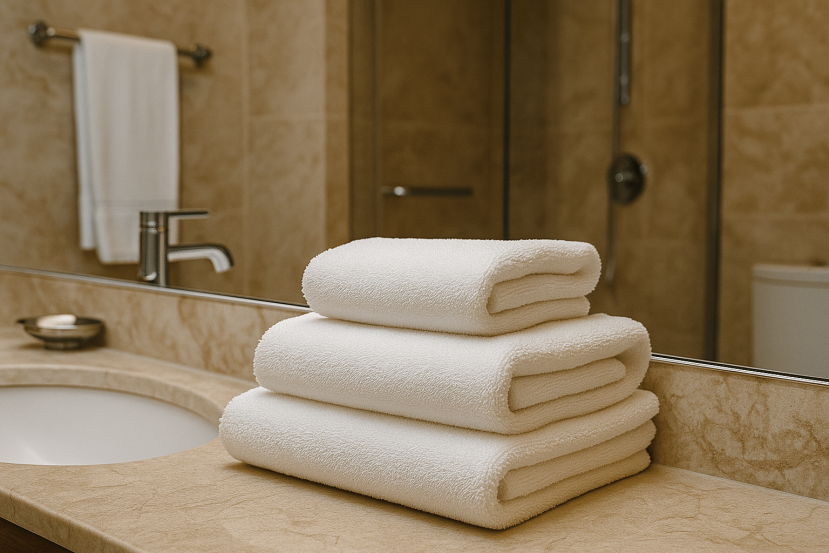Scientific Evaluation of GSM, Fiber Composition, and Cost Efficiency in Hotel Towel Selection
Towels and related textile products used in the hospitality industry are not only indicators of comfort but also key factors in cost management, operational efficiency, and brand perception. While unit price is certainly a consideration in procurement decisions, it is ultimately the product’s performance parameters and lifespan that determine its long-term value.
In this article, we present a data-driven and scientific evaluation of two often-overlooked but essential factors in towel selection: GSM (grams per square meter) and fiber composition.
GSM (Weight per Square Meter): The Foundation of Comfort and Durability
GSM, the weight of fabric per square meter, is a fundamental measure of a textile product’s comfort, absorbency, and mechanical resistance. Academic studies (e.g., Textile Research Journal, 2019) have shown that towels with higher GSM values demonstrate:
• Greater water absorbency,
• Lower structural deformation over time,
• Higher resistance to mechanical abrasion.
The same research notes that low-GSM towels are more prone to fiber loss under industrial laundering conditions, which leads to increased maintenance frequency and elevated long-term operational costs.
Fiber Composition: Microscopic Differences with Macro-Level Impacts
The fiber content of a towel directly affects durability, drying time, and tactile softness. Studies focusing on varying cotton–polyester blends (Journal of Engineered Fibers and Fabrics, 2021) have revealed the following:
• 100% cotton towels offer superior softness and absorbency due to their natural fiber structure,
• Cotton–polyester blends provide better mechanical strength and faster drying times,
• Variations in fiber composition affect micro-fibril splitting, pilling behavior, and wear rate over time.
These findings suggest that in high-traffic hospitality environments, a towel’s performance depends not only on surface feel but also on its internal fiber structure and integrity.
Beyond Unit Price: Understanding True Cost
An initially low purchase price may appear economical, but the real cost of textile products lies in their service life and maintenance requirements.
A study published by Harvard Business Review emphasized that over 60% of the total cost of industrial textile products is derived from their laundering, maintenance, and replacement cycles.
This underscores a critical reality: low-cost, short-lifespan products can result in significantly higher expenditures in the long term.
Conclusion: Data-Driven Procurement Enables Stronger Operational Outcomes
For hotel purchasing professionals, selecting the right towel is not merely a supply decision—it is a strategic one. In products with frequent use such as towels, factors like GSM, balanced fiber composition, and structural durability are directly tied to guest satisfaction and cost efficiency.
Procurement strategies based on scientific data rather than unit price alone are essential for sustainable and high-performing hospitality operations.
Partner with Royaltex for Scientifically Proven Quality
At Royaltex, we develop textile solutions for the hospitality sector with a focus on quality, efficiency, and sustainability. If you seek a supplier who makes decisions based on scientific evidence and measurable product performance, we would be pleased to collaborate with you.

